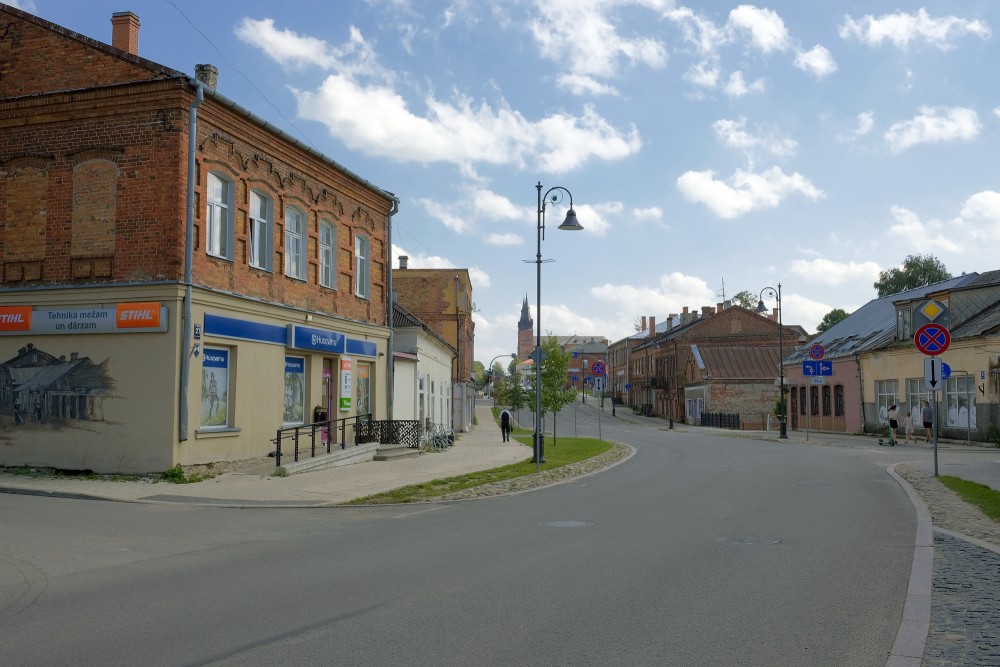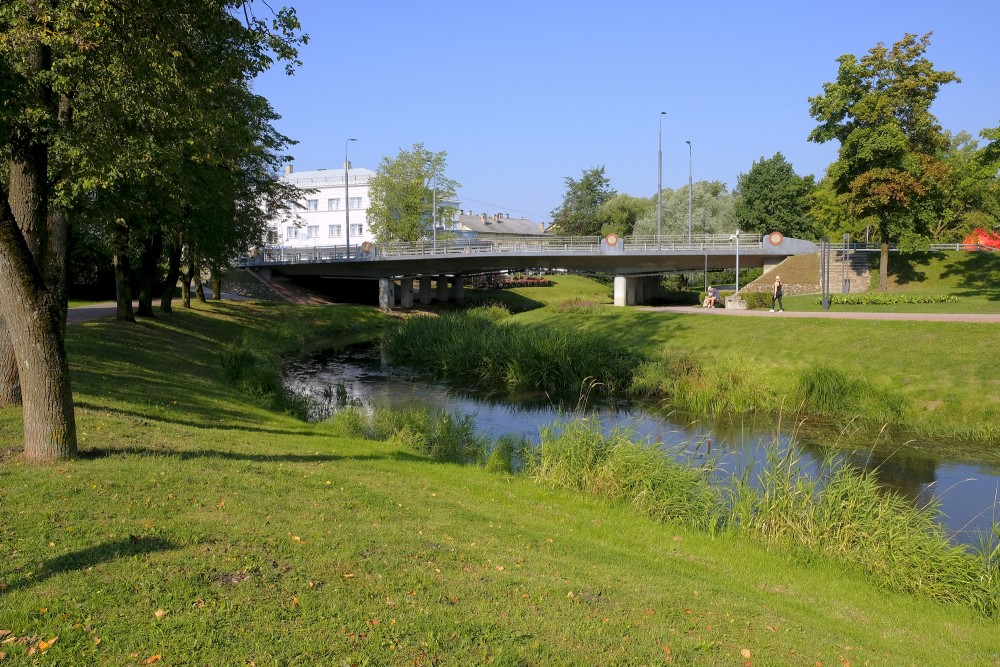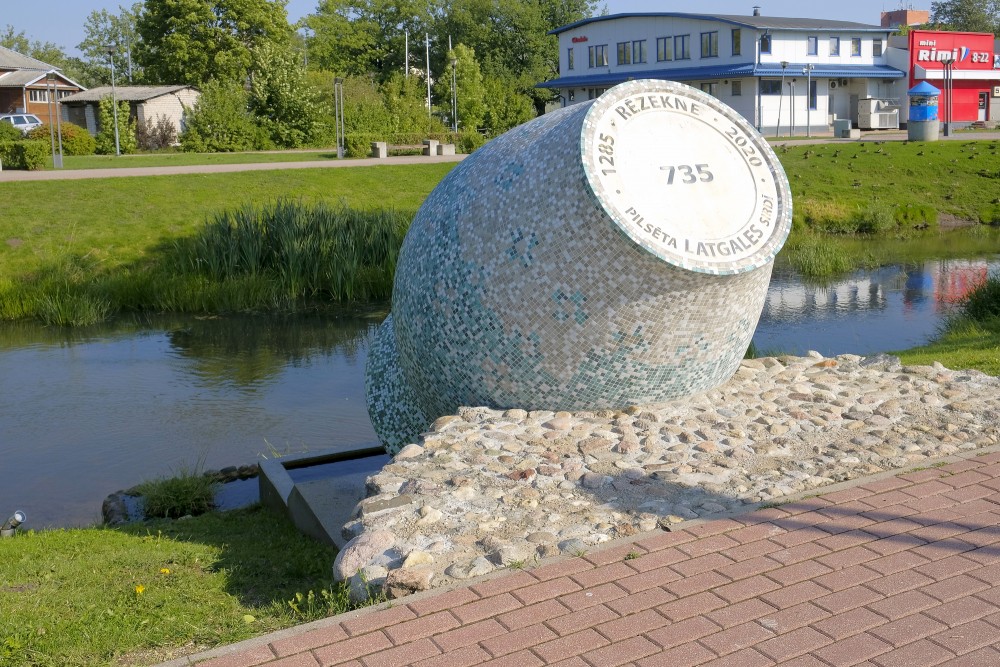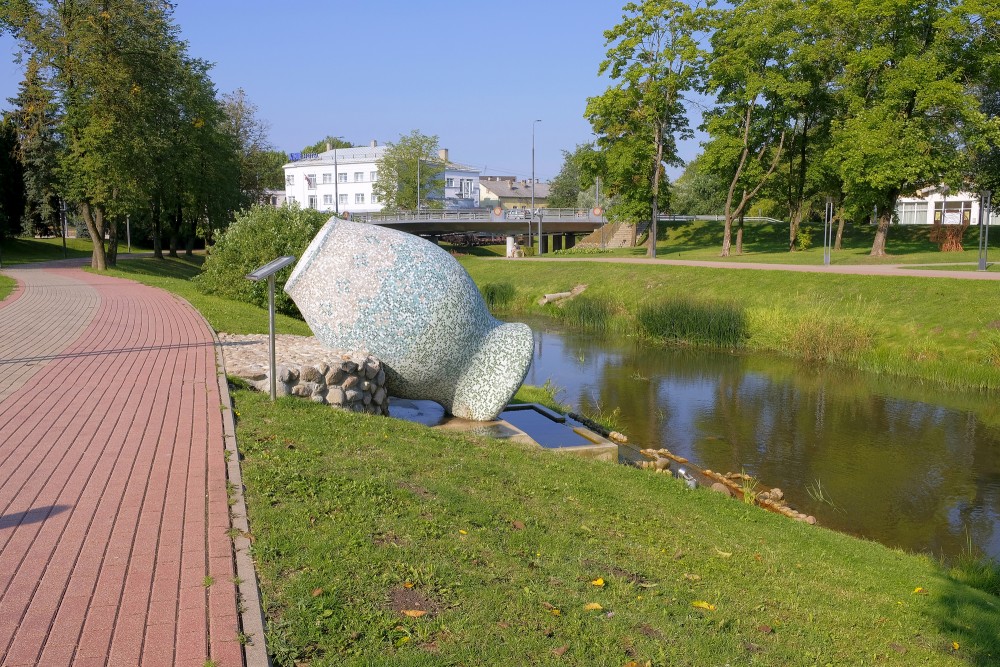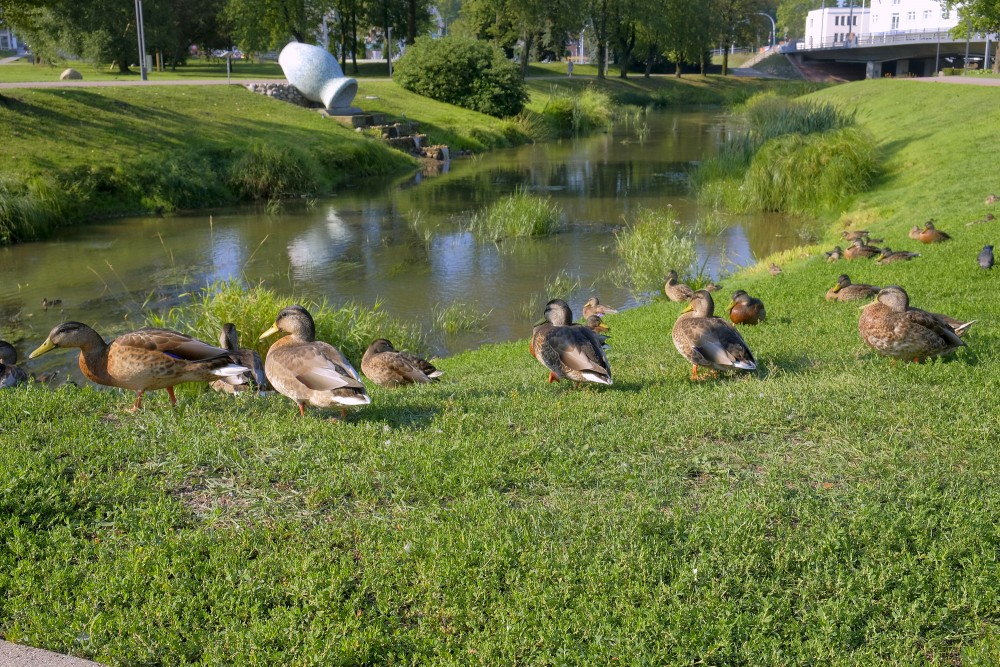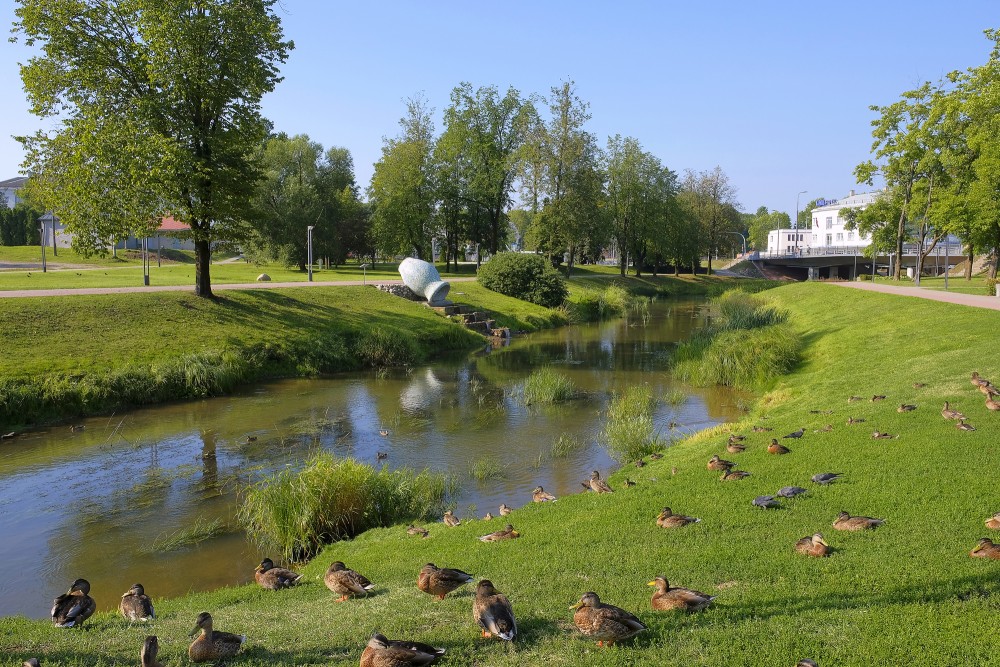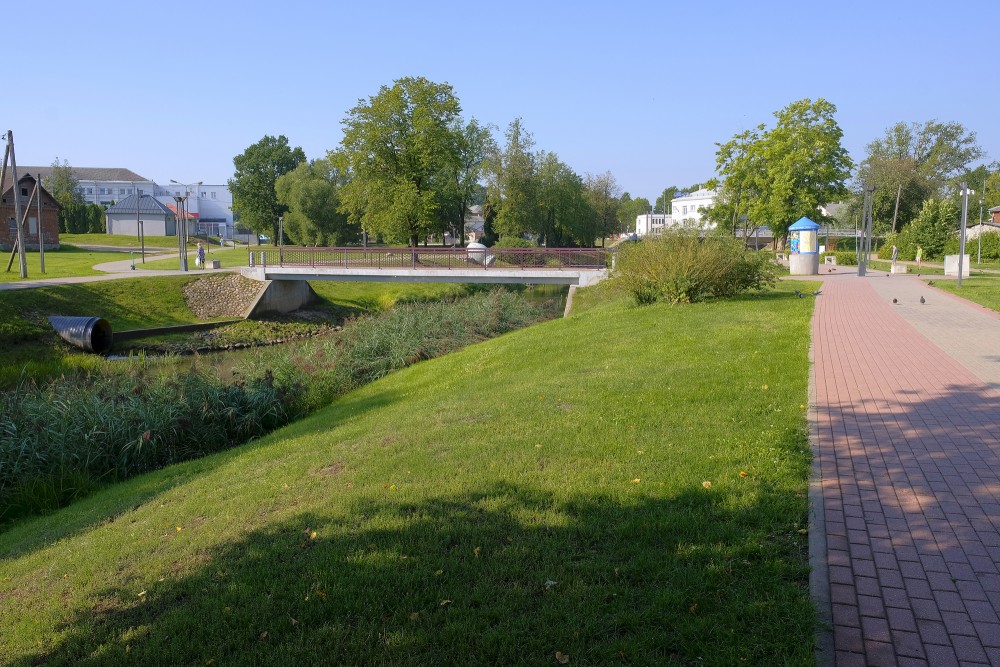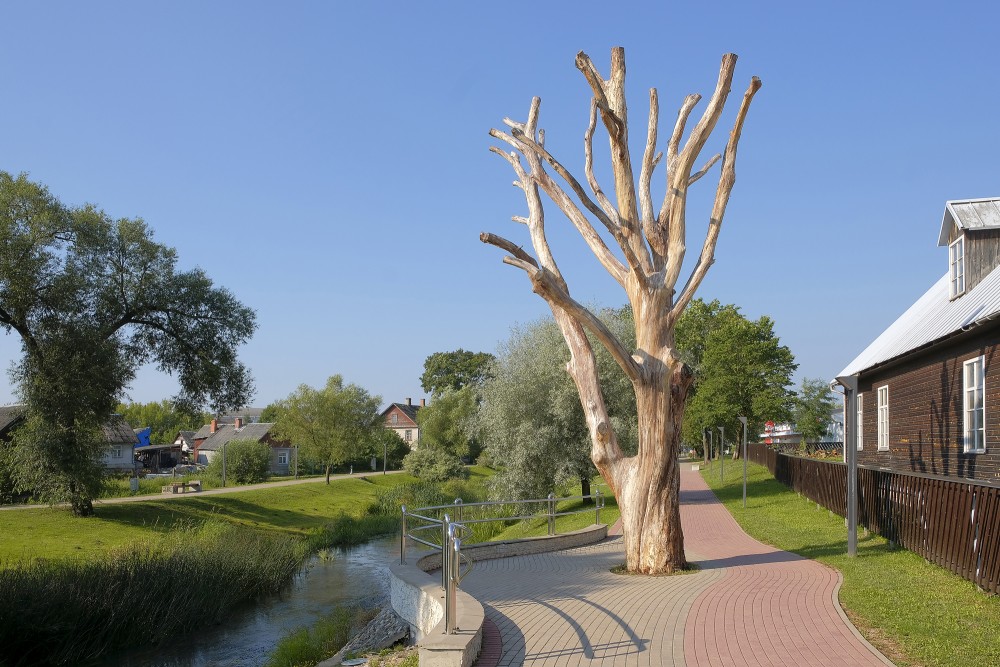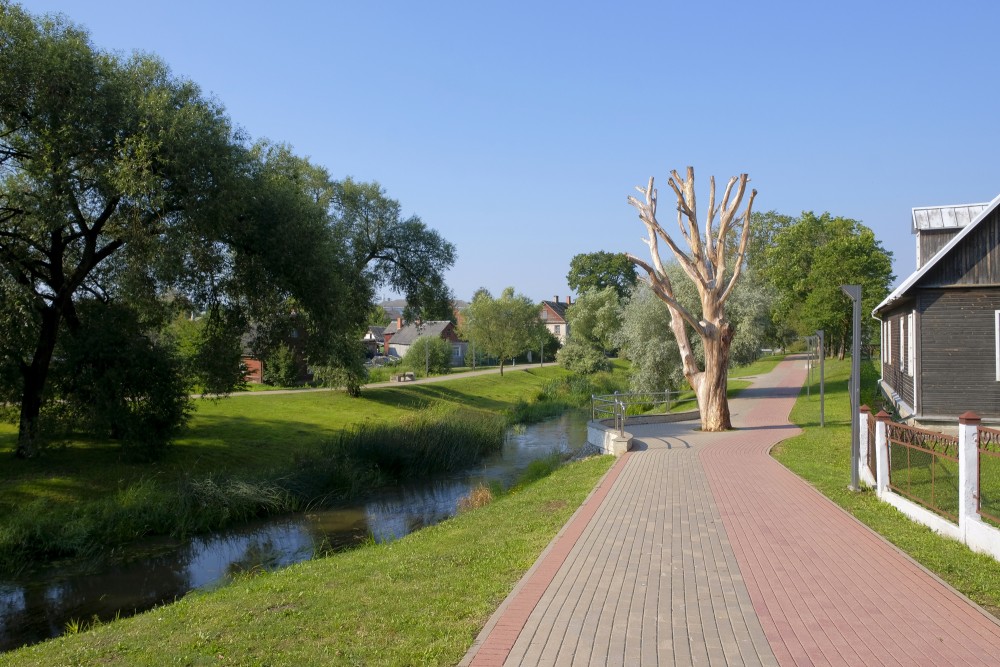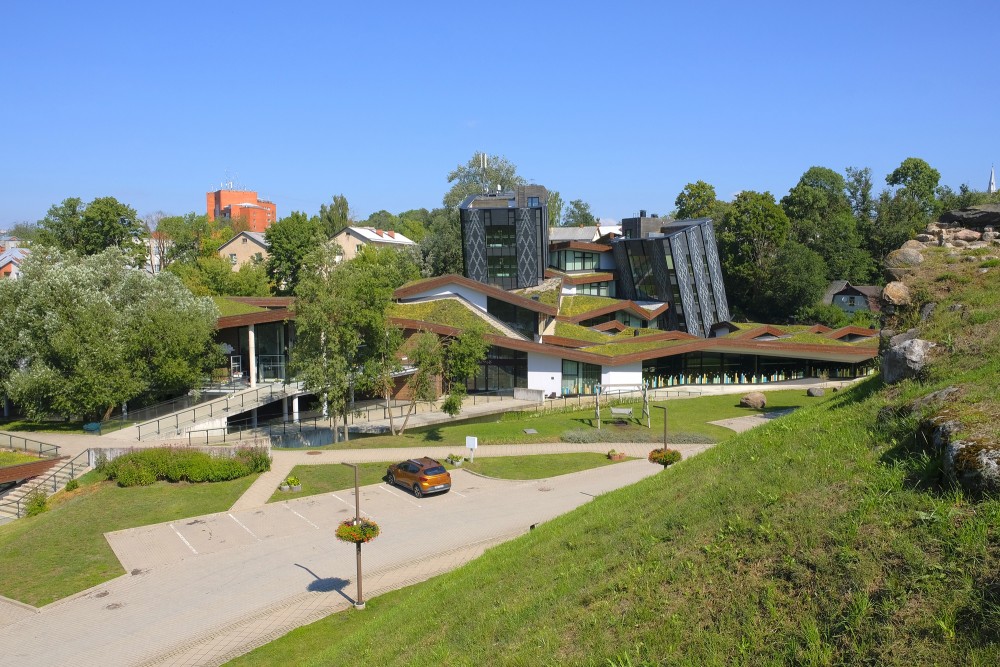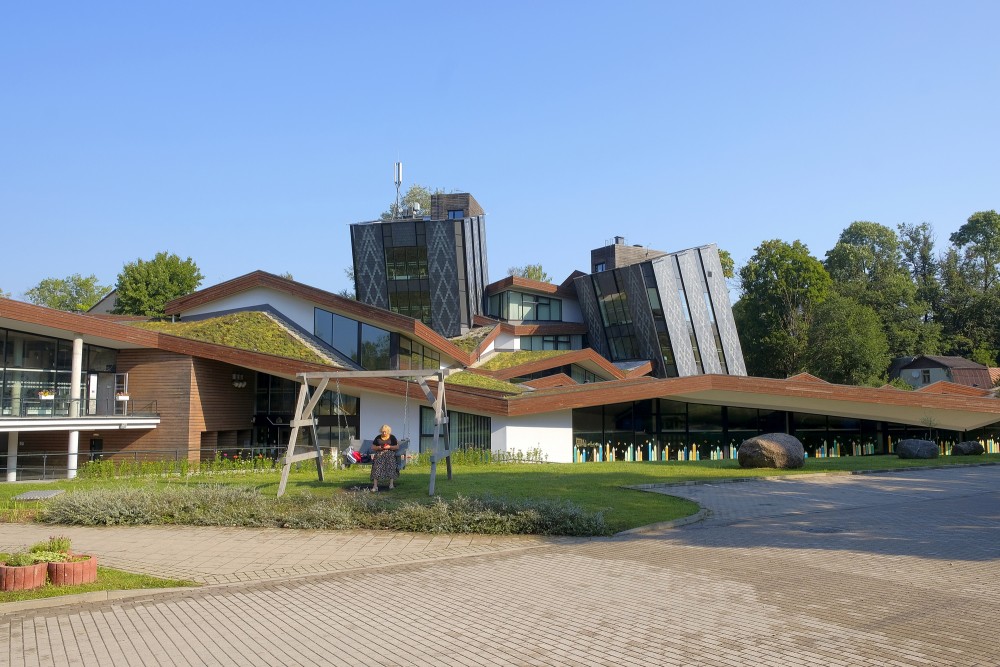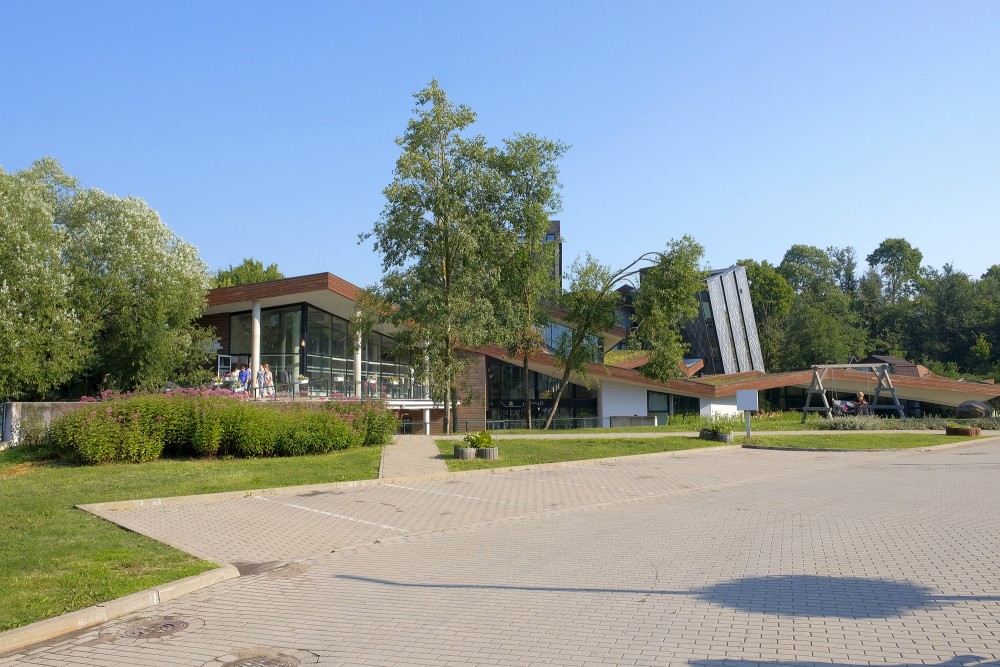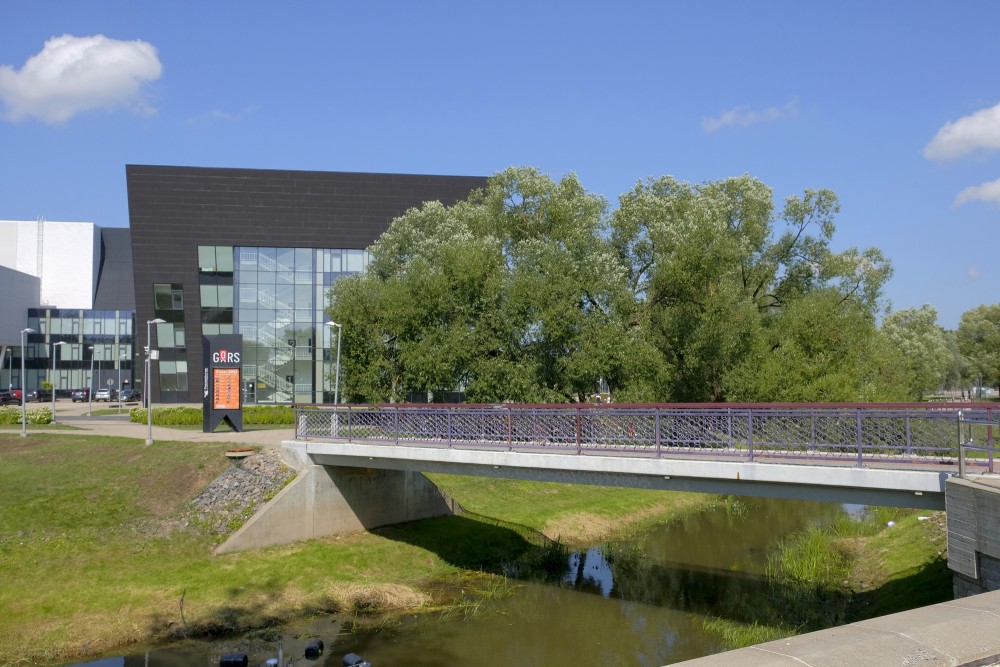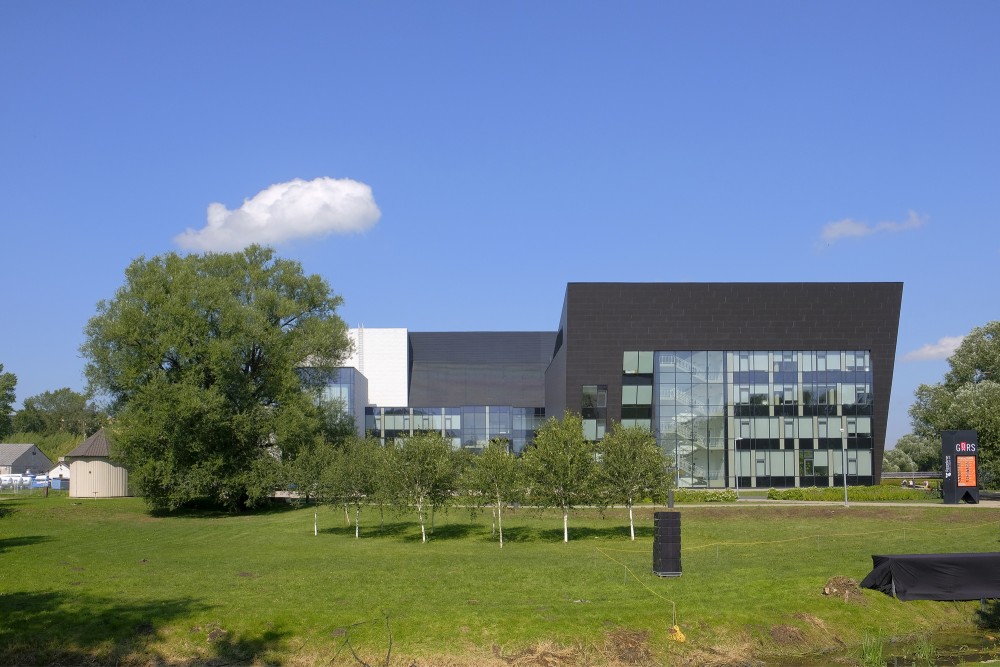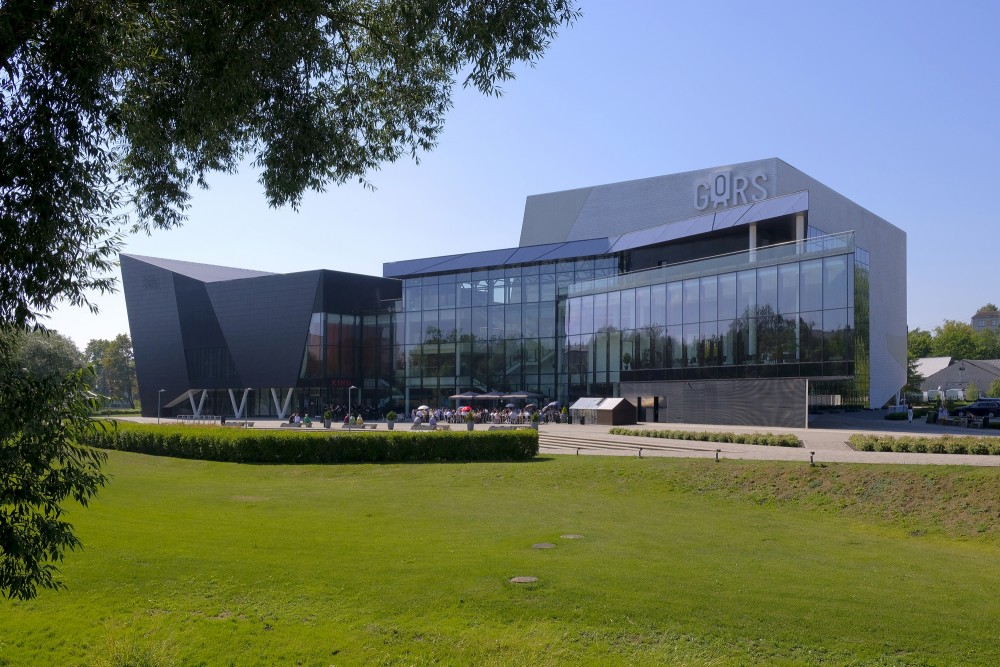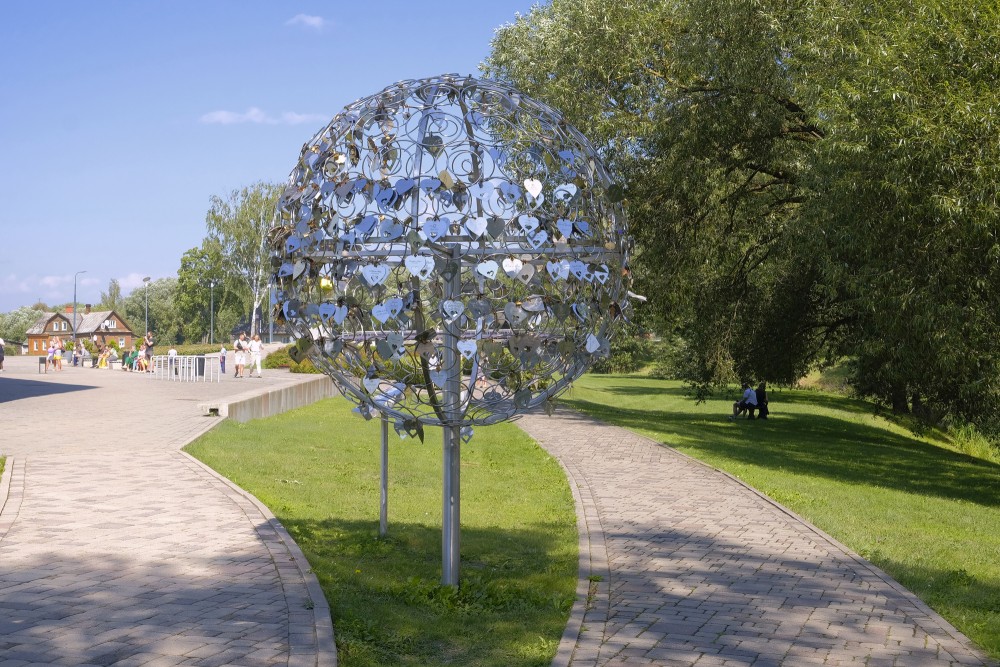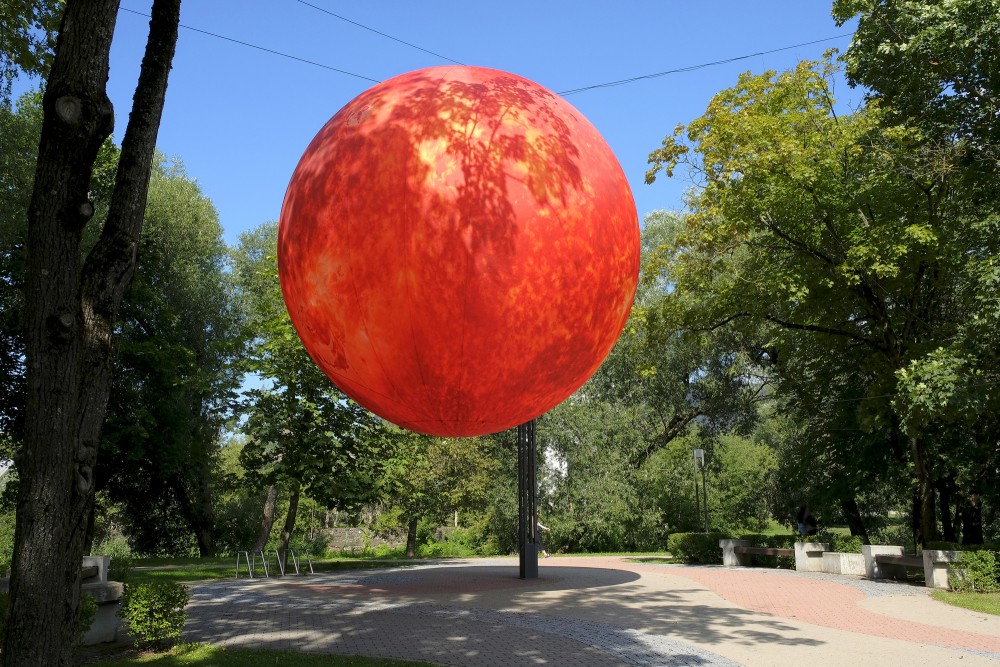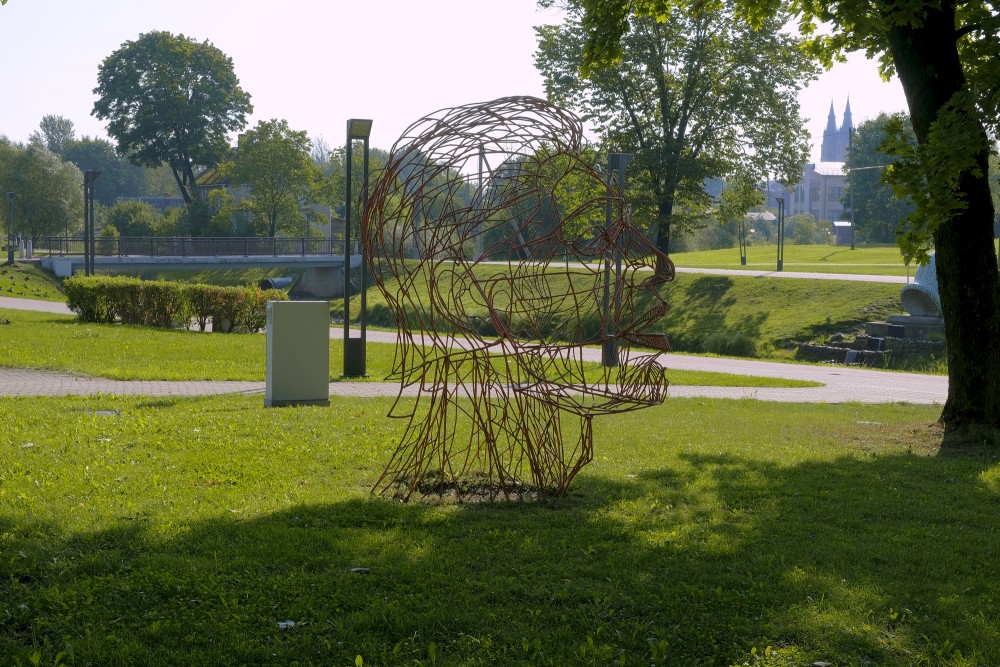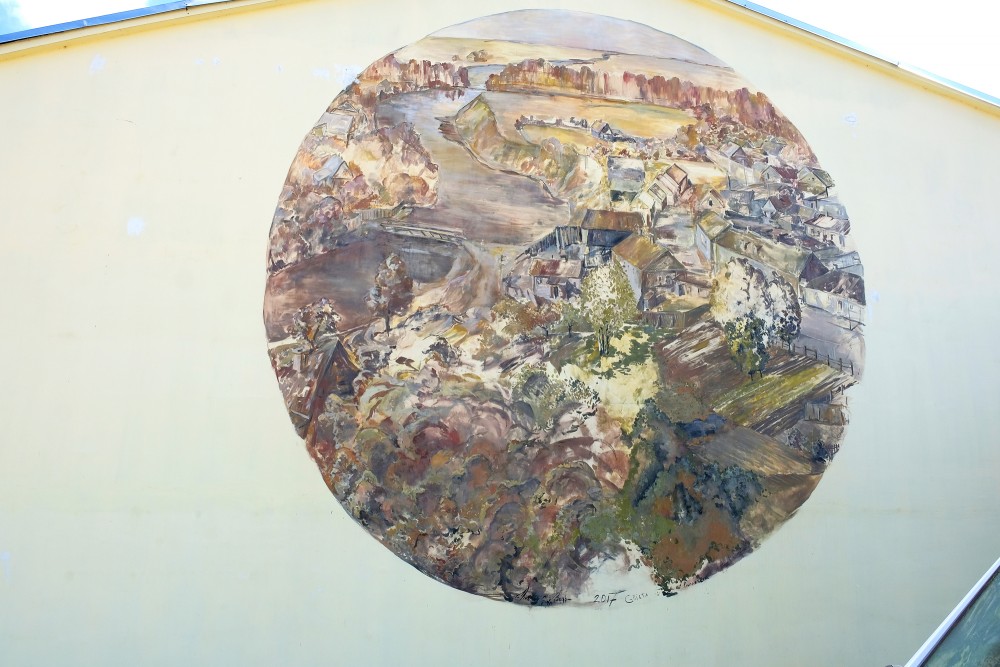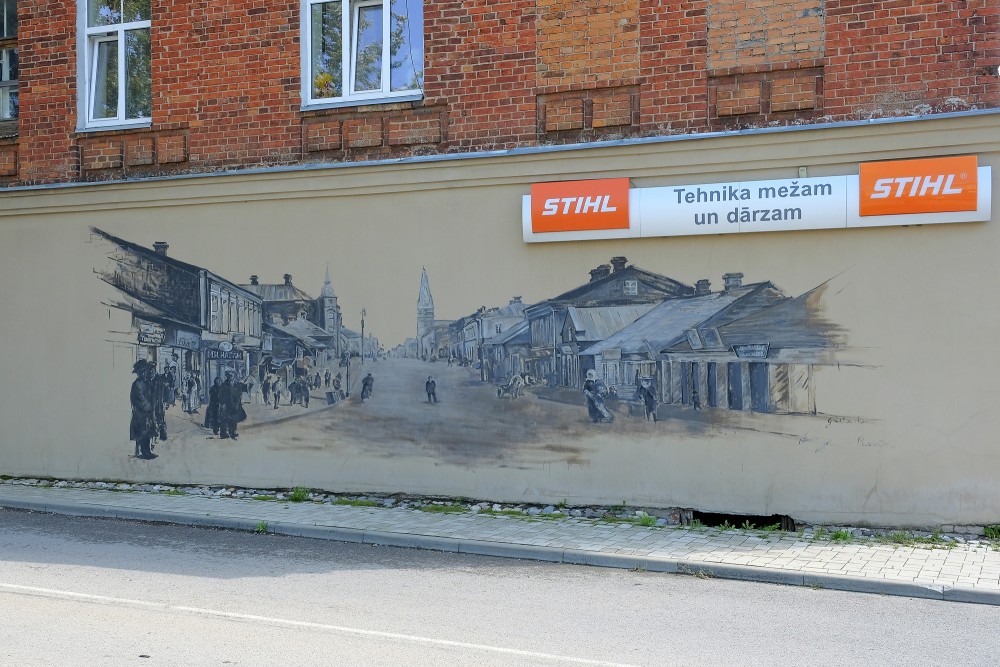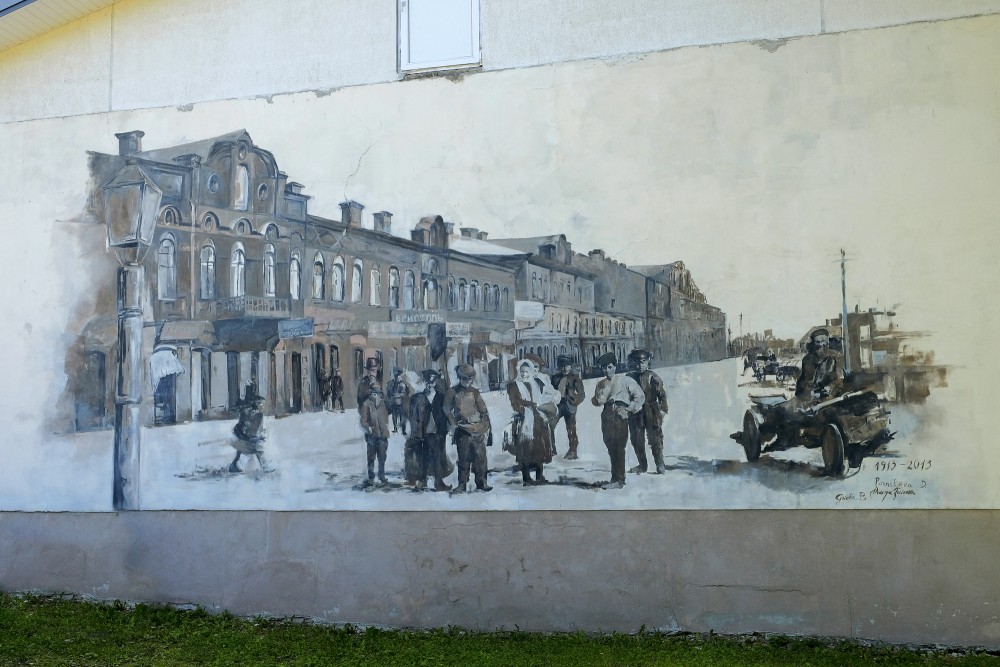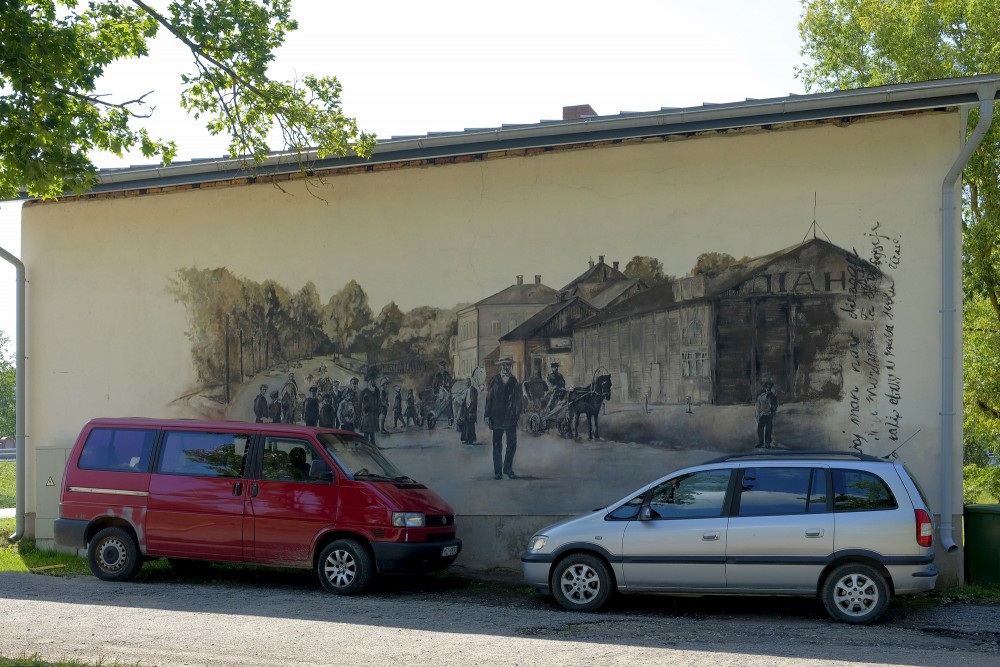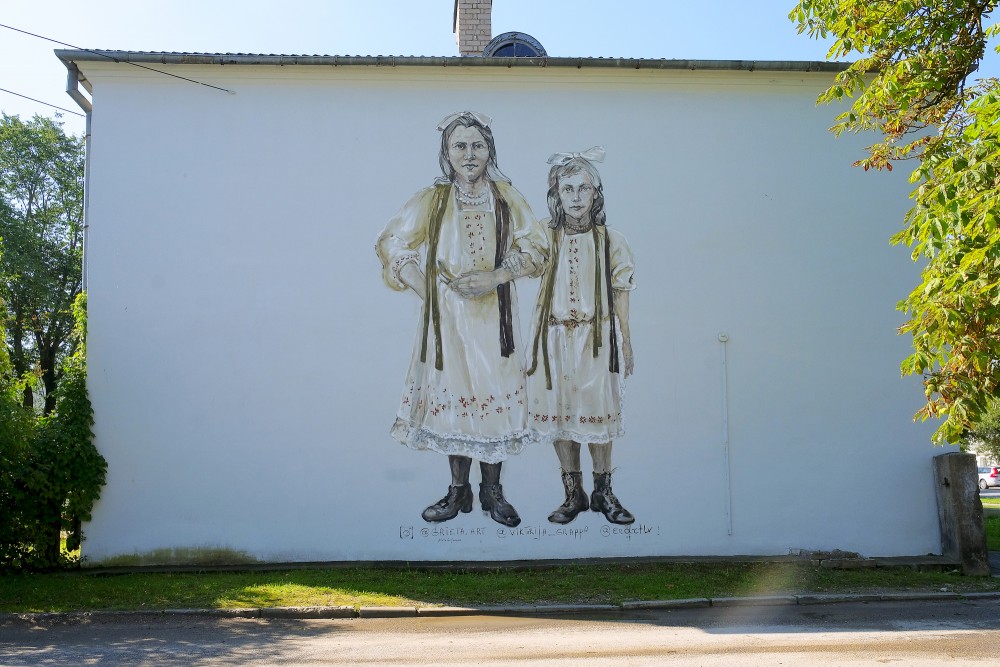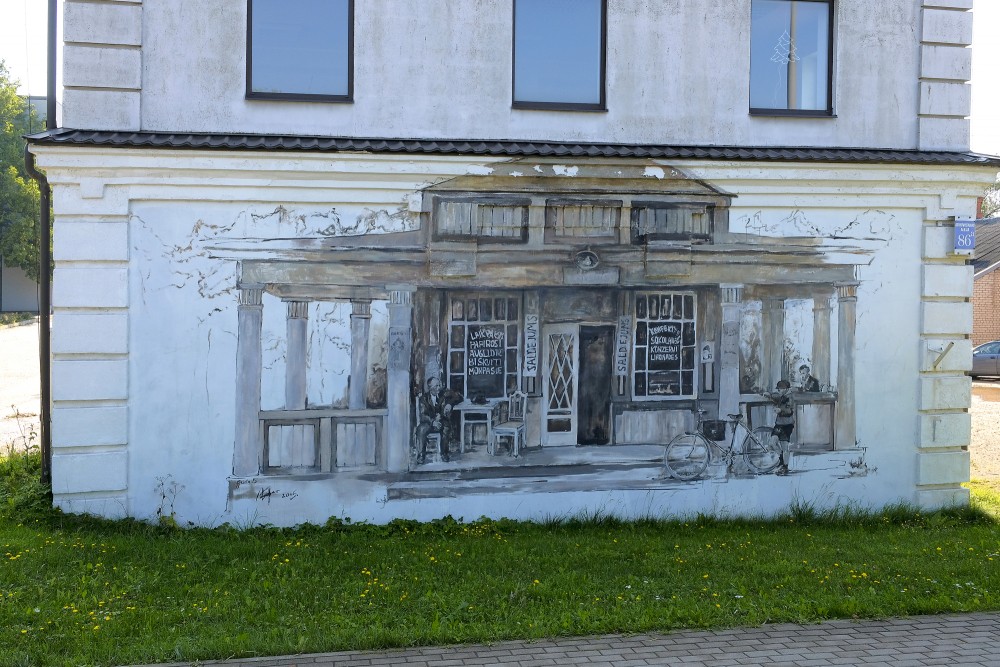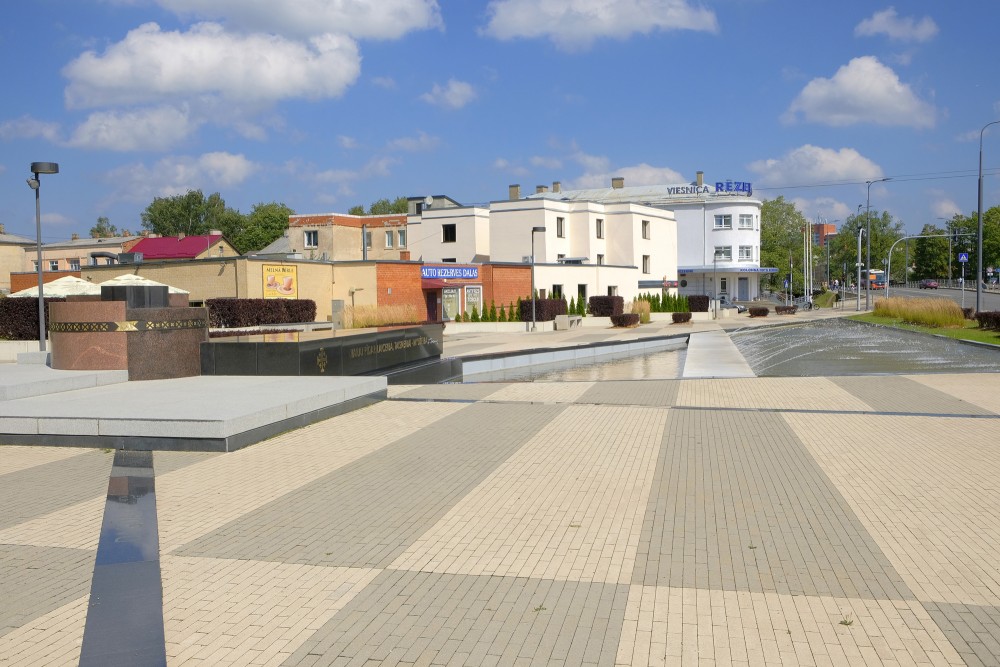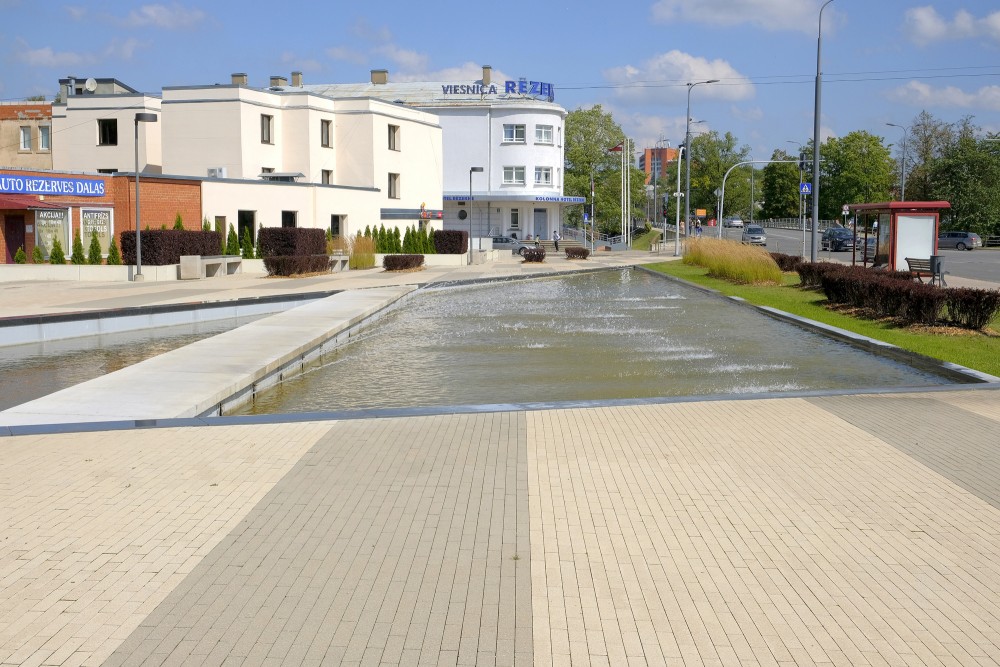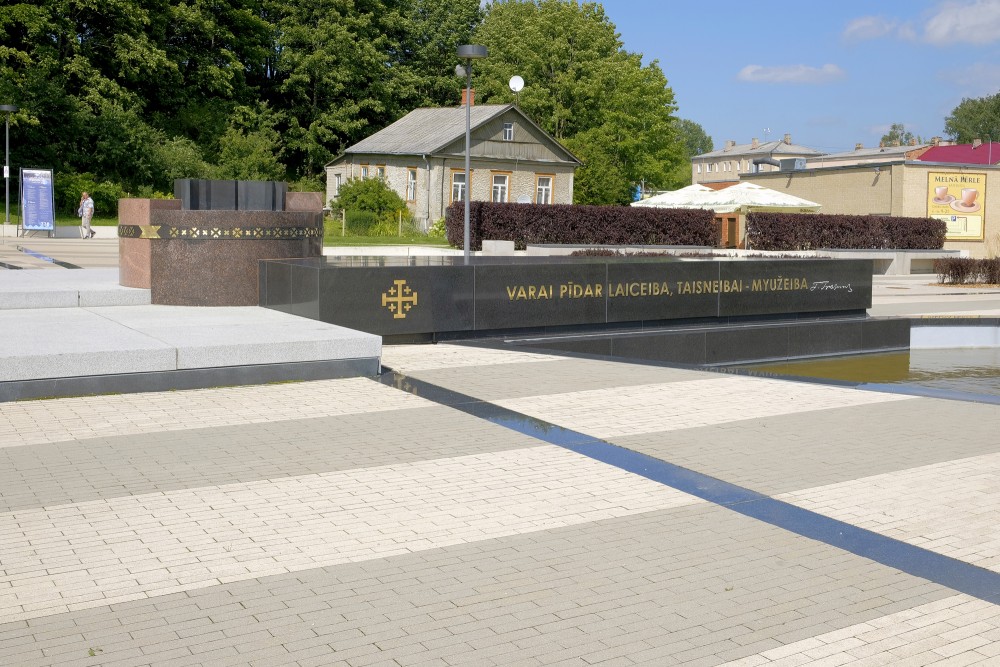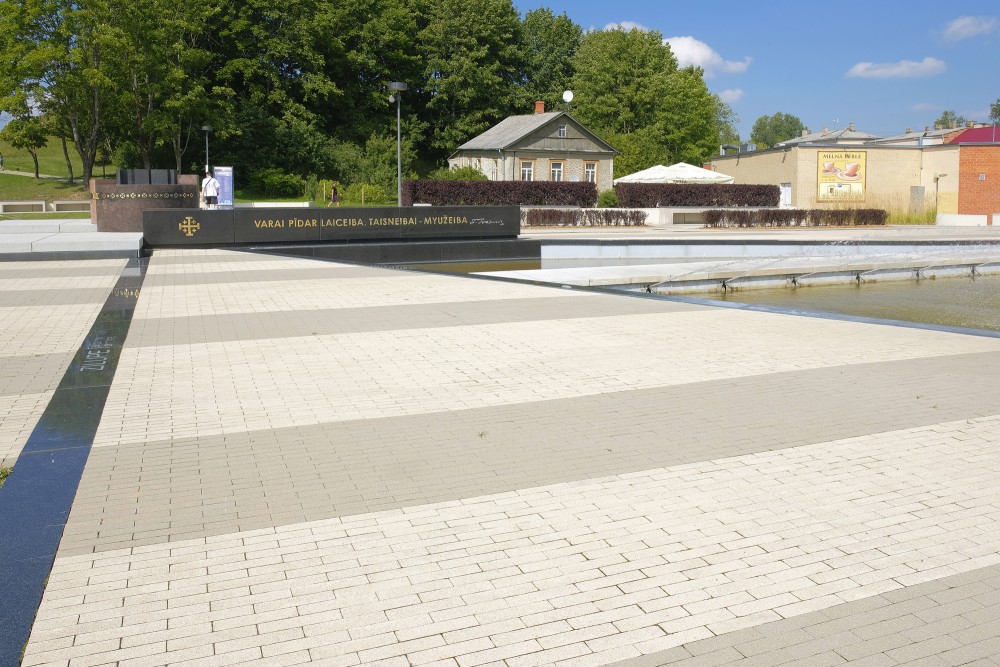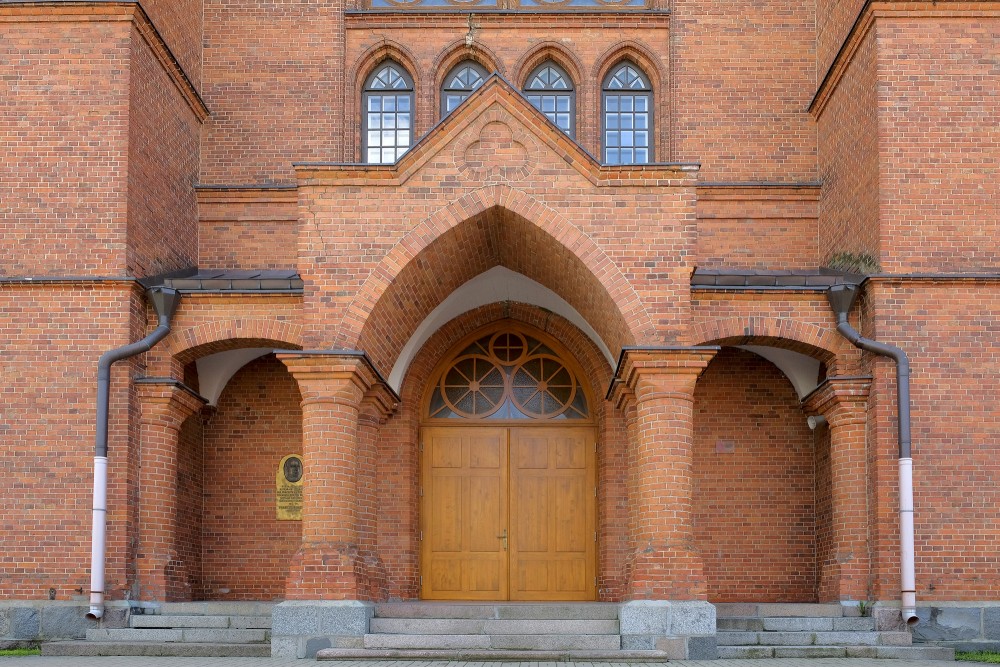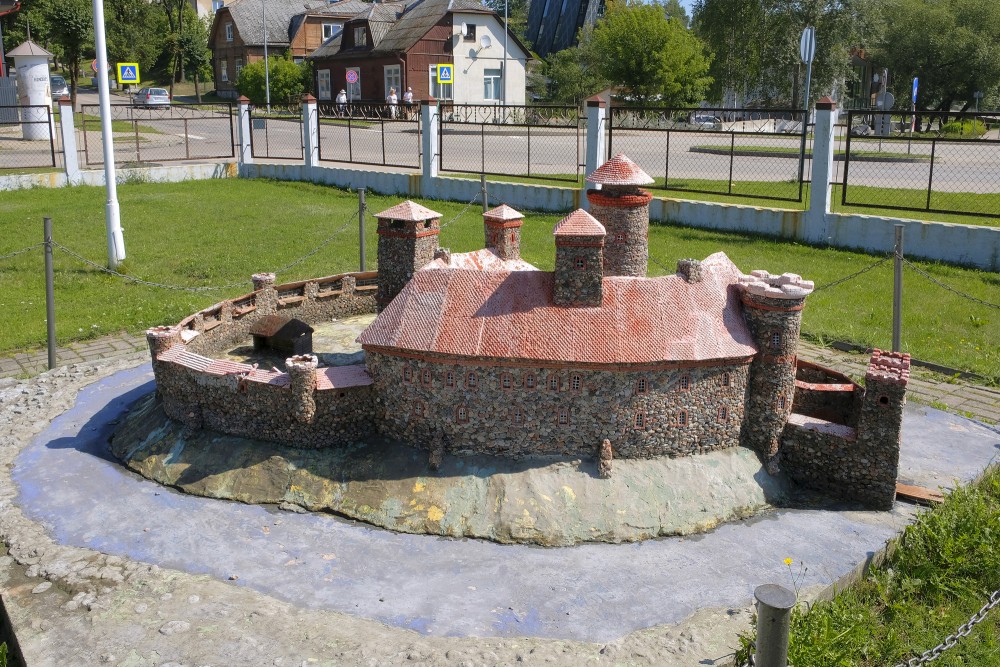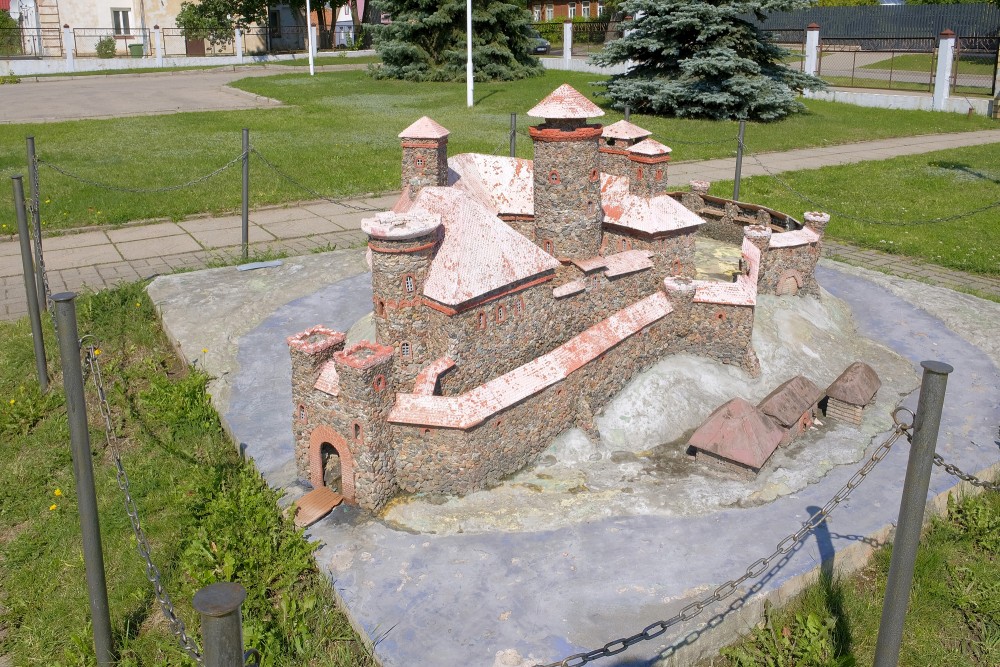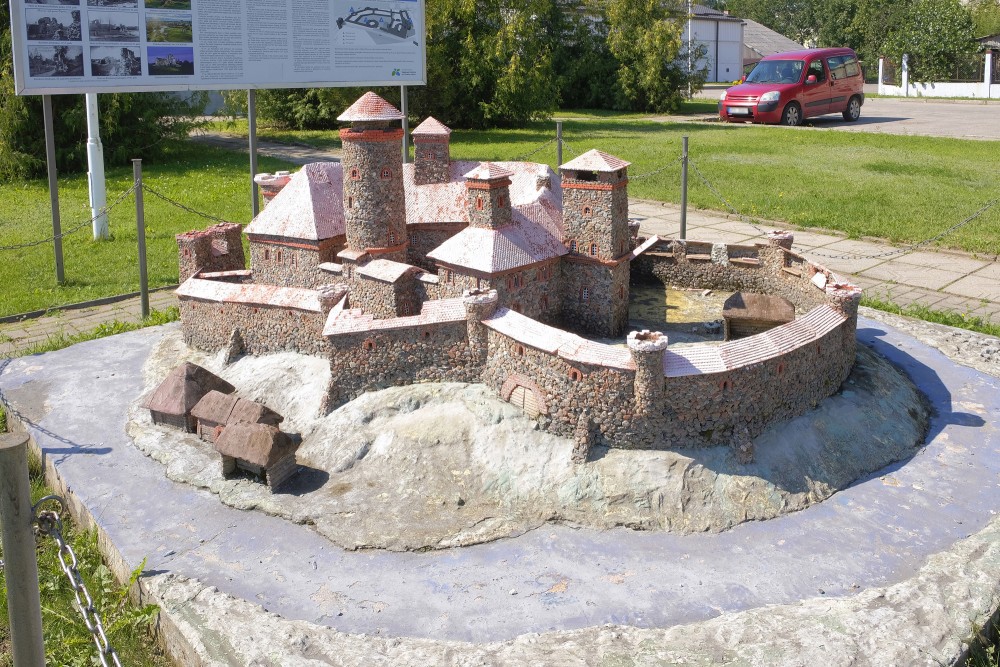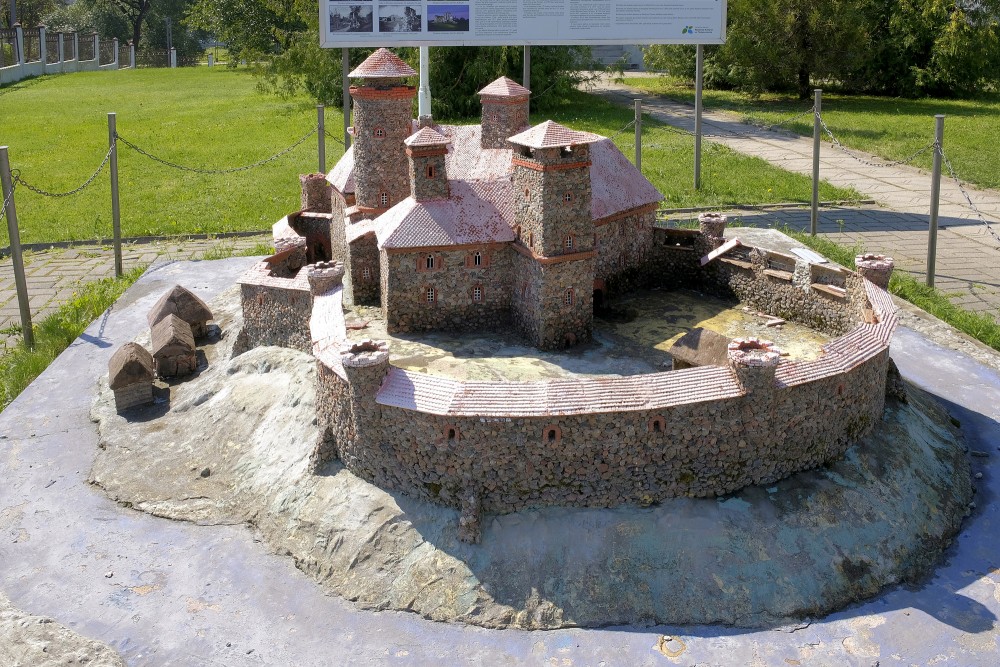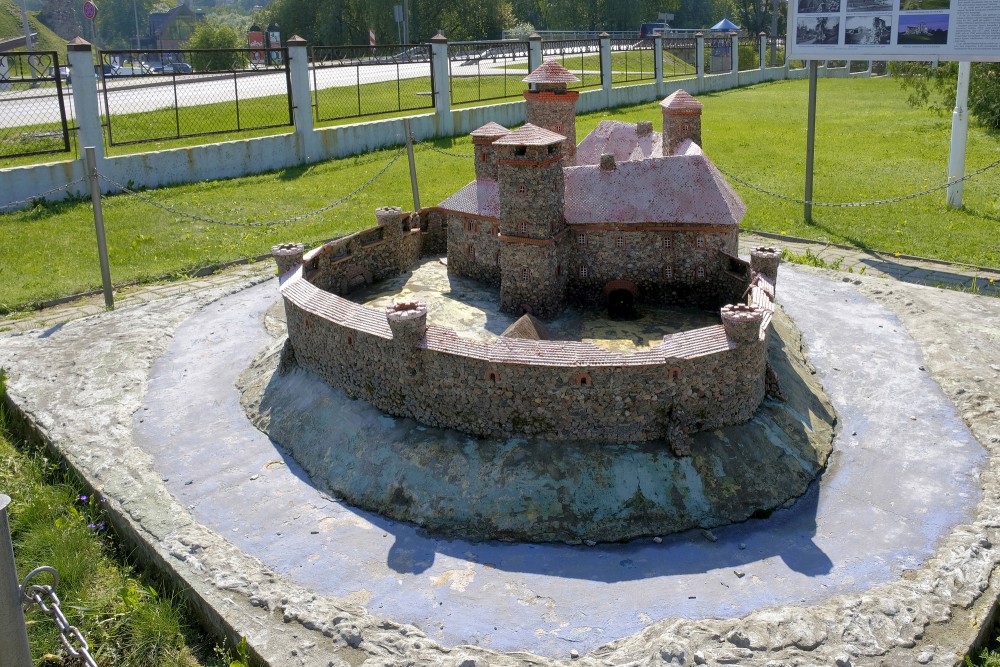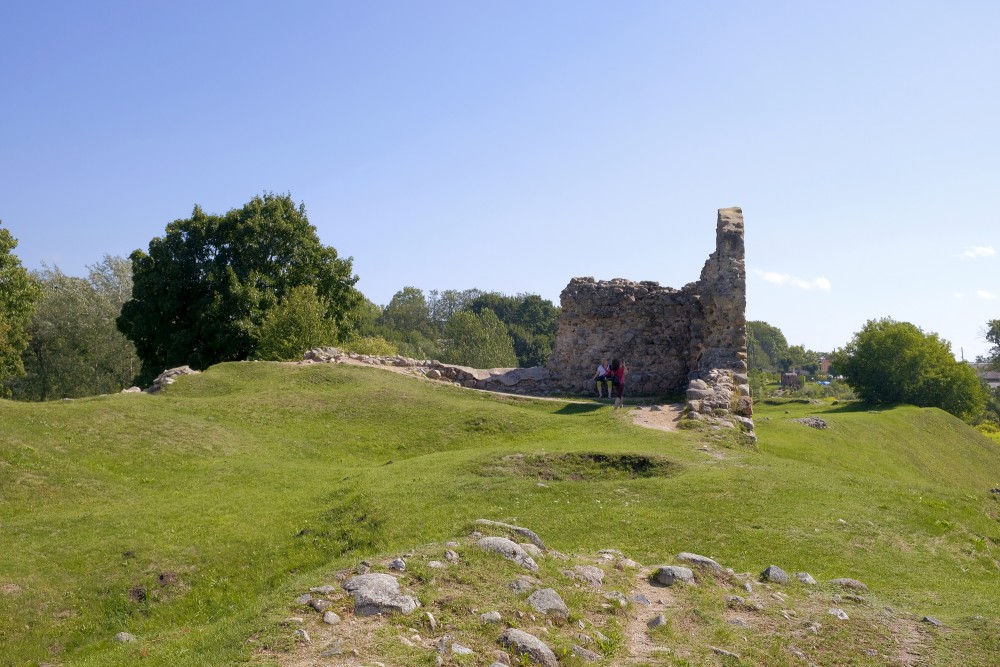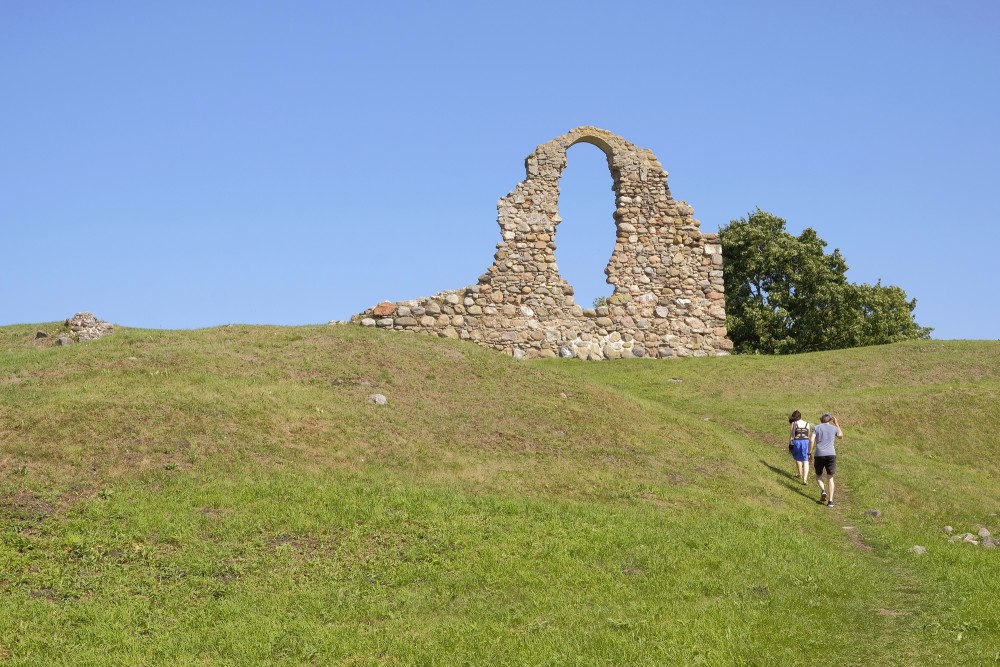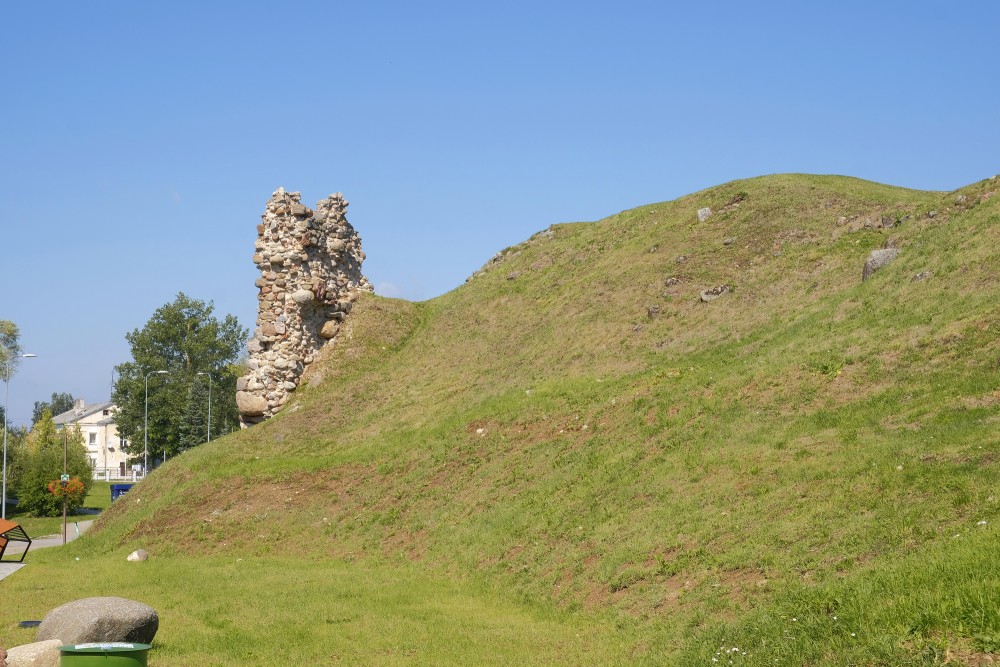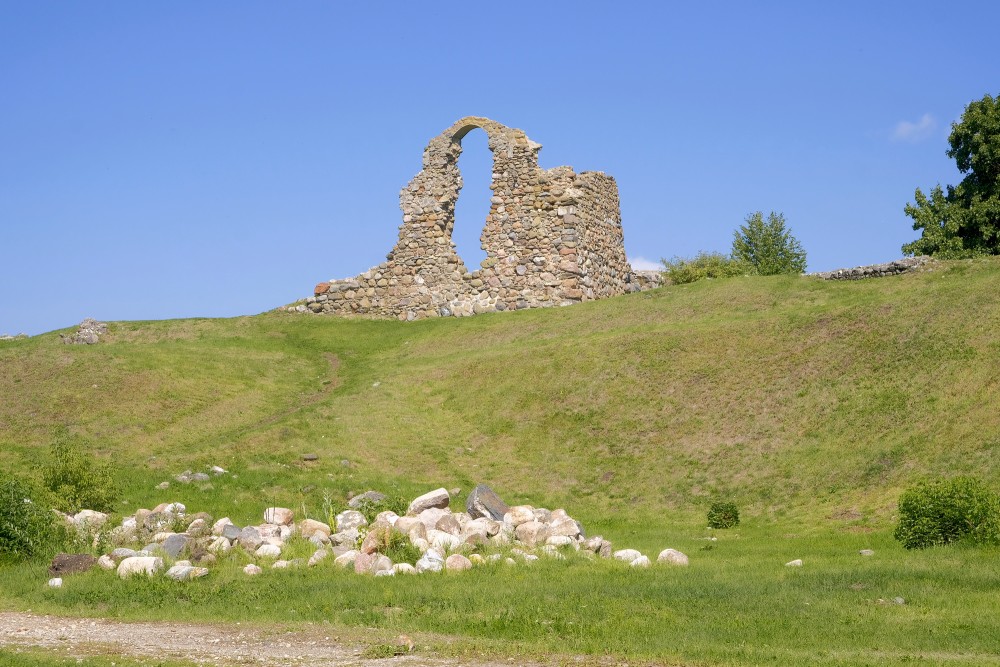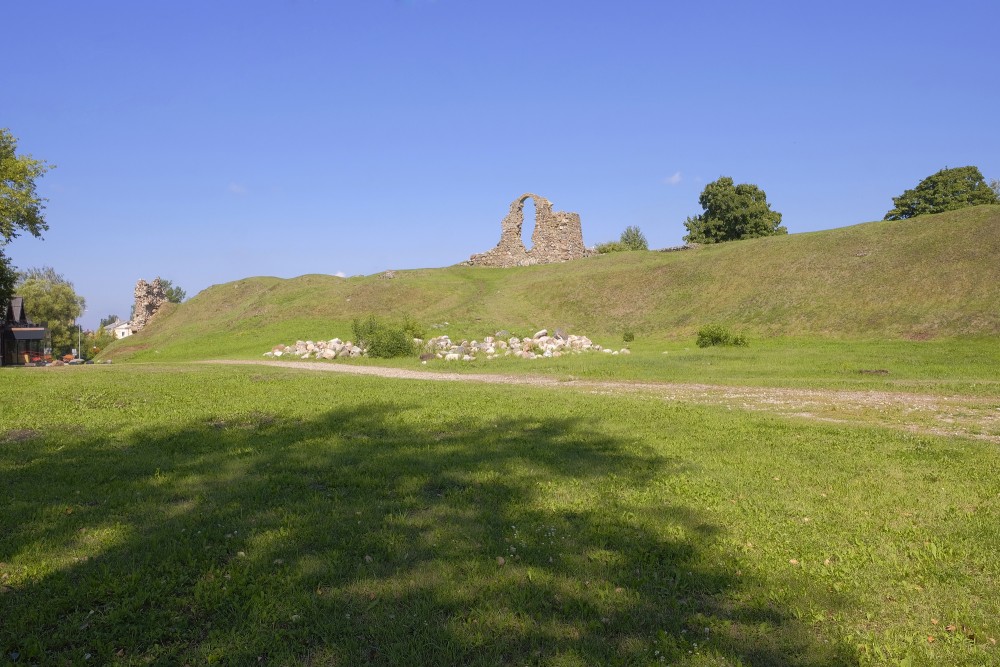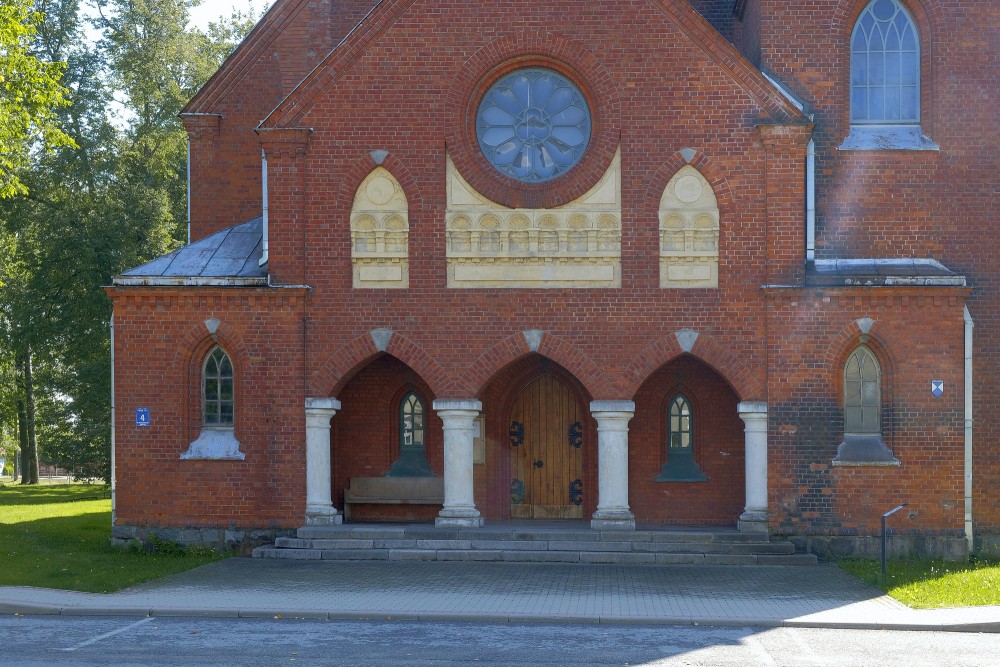Rēzekne State city, Latvia
Rēzekne (Latvian: [ˈrɛːzekne], Latgalian: Rēzne pronounced [rʲæːzʲnʲæ] or Rēzekne pronounced [ˈrʲæːzʲækʲnʲæ]) is a state city in the Rēzekne River valley in Latgale region of eastern Latvia. It is called The Heart of Latgale (Latvian Latgales sirds, Latgalian Latgolys sirds). Built on seven hills, Rēzekne is situated 242 kilometres (150 miles) east of Riga, and 63 kilometres (39 miles) west of the Latvian-Russian border, at the intersection of the Moscow – Ventspils railway and Warsaw – Saint Petersburg Railways. It is the 7th largest city in Latvia.
| Rēzekne | |
| State city | |
| Country | Latvia |
| First mentioned | 1285 |
| Town rights | 1773 |
| Area | |
| • Total | 17.50 km2 (6.76 sq mi) |
| • Land | 17.12 km2 (6.61 sq mi) |
| • Water | 0.38 km2 (0.15 sq mi) |
| Elevation | 158.2 m (519.0 ft) |
| Population (2023) | |
| • Total | 26,378 |
| • Density | 1,500/km2 (3,900/sq mi) |
| Website | www.rezekne.lv |
History
A Latgalian hill fort is known to have existed at Rēzekne from the 9th to the 13th centuries, until its destruction at the hands of German crusaders of the Livonian Order. In 1285, the knights built a stone fortress on the site, which is today known as Rēzekne castle ruins, to serve as a border post on their eastern frontier.
The name Rēzekne was first documented in 1285. Throughout its early history, Rēzekne was attacked many times by Russian and Lithuanian forces. The town became part of the Polish–Lithuanian Commonwealth after the Peace of Jam Zapolski in 1582 during the Livonian War. Rēzekne received Magdeburg rights from Poland in the 17th century, but fell to the Russian Empire during the Partitions of Poland. In 1773, Rēzekne received city rights. Known as "Rezhitsa" during Russian rule, it was an uyezd center first in Pskov Governorate between 1772 and 1776, then Polotsk between 1776 and 1796, Belarus between 1796 and 1802 and finally in Vitebsk Governorate between 1802 and 1917.
During the 19th century, the construction of the Moscow–Ventspils and Saint Petersburg–Warsaw railways transformed Rēzekne from a sleepy country town into an important city with two stations.
In the spring of 1917, the first Latgalian congress was held in Rēzekne, in which Latgale was declared to unite with the other Latvian regions. Following Latvia's declaration of independence in 1918, the Latvian War of Independence and the driving out of both the German and Red armies from Latvia, the city became a cultural centre for all of Latgale.
Rēzekne was heavily damaged by both Nazi and Soviet armies during World War II. It was captured by troops of the German Army Group North on 4 July 1941 and placed under the administration of the newly created Reichskommissariat Ostland on 25 July 1941. Rēzekne was recaptured by troops of the Soviet 2nd Belorussian Front on 27 July 1944. Due to the heavy air-bombing by Soviet forces in 1944, ⅔ of its buildings were destroyed. Out of a pre-war population of 13,300, only 5,000 people remained in the city at the end of the war.
Rēzekne was rebuilt after the war with an emphasis on industrial development. Rēzekne had the 5th highest industrial output in the Latvian SSR, including a dairy processor (Rēzeknes Piena konservu kombināts), a lumber mill, and an electric-instrument factory (Rebir).
Culture
Latgales Māra
One of the most famous statues in Latvia, known as "Latgales Māra", is found in Rēzekne. It was designed by Leons Tomašickis and first unveiled on 8 September 1939. The bronze statue commemorates the liberation of Latgale from the Red Army in January 1920.
The central figure, the woman, is popularly associated with Māra the ancient Latvian goddess of motherhood, fertility, and earth. The cross in her outstretched arm symbolizes the deep importance of Catholicism to Latgalian culture. The words "Vienoti Latvijai" beneath the statue (meaning "United for Latvia") designates the decision to reunite with the rest of Latvia during the Republic's formation in 1918, even though Latgale had been politically separated from the rest of Latvia for 300 years.
Because the statue symbolized Latvian nationalism, the Soviets toppled it in November 1940 during the first Soviet occupation of Latvia. Under German occupation the local residents restored it on 22 August 1943. The reinstated Soviet government pulled it down again in June 1950. After that, the fate of the original statue is unknown.
After Latvia regained its independence in 1991, the statue was reconstructed using old photographs and blueprints, and unveiled on 13 August 1992. Though Soviet rule greatly changed Latgale, Latgales Māra still symbolizes a Catholic Latgale united with Latvia, free of foreign domination.
Castle Ruins
The Castle Ruins, situated on the hill by the river, are the remainders of the ancient fortified residence of ancient Latgalians which existed there from the 9th to 13th centuries. At the end of the 13th century the Livonian Order built a stone castle (Rozitten castle). It was situated in a strategically important place, so the Russians, Lithuanians and Poles were seeking to conquer it. The castle was completely destroyed during the Polish-Swedish war (1656-1660). A model of Rēzekne castle by Edmunds Smans is located near the castle hill.
Latgale Culture and History Museum
The Latgale Culture and History Museum (Latgales Kultūrvēstures muzejs) was opened in 1959. The museum offers exposition of the town history, art exhibitions, and pedagogical activities for children. The exposition of Latgale ceramics is the only permanent exposition in Latvia to reflect Latgalian ceramics in its history from the beginning of pottery in the Neolithic period until the achievements of present-day Latgalian ceramists and modern developments. Ceramics collection includes 2000 ceramic wares, made by the renowned Latgalian ceramicists, such as Andrejs Paulāns, Polikarps Čerņavskis, Polikarps Vilcāns, Jānis Backāns, Ādams Kāpostiņš and others. At the moment the museum stock collection has about 70 thousand items.
Art House
The building which is now the Art House was built in the last quarter of the 19th century for the merchant Vorobjov. It features rich woodcarvings on its façade, decorated in an eclectic style.
It soon became the property of the city, and was used as a teachers' institute, a school, a tuberculosis centre and a military registration office. This frequent change of users almost totally destroyed the original rich interior.
In the middle of the 1990s it was acquired by the Rezekne Art College. Due to the efforts of the students and teachers, the Art House got back its original outlook. It houses the exposition "Latgalian painting" from the reserves of the Latgale Culture History Museum.
Eastern Latvia's Center of Creative Services "Zeimuļs"
The Eastern Latvia's Center of Creative Services "Zeimuļs" houses classes of interest and non-formal education for children and youth.
The opening of the center was on 1 September 2012. The architects were Rasa Kalniņa and Māris Krumiņš who used Latvian ethnographic motifs in their design. The main construction materials are concrete, glass, metal and wood. It is the largest building with a green roof in the Baltic countries. The towers offer one of the best views in Rezekne, over the Castle Hill and the historical center of the city.
The centre of culture "Gors"
The multifunctional culture centre "Gors" (The Embassy of Latgale) was opened in 2013. In addition to the main 1000-seat concert hall, it includes a 220-seat concert hall, Registration of marriages hall, exhibition space, repetition halls and a restaurant. The centre is used for a variety of purposes, including concerts, conferences, film, ballet and theatre.
en.wikipedia.org
